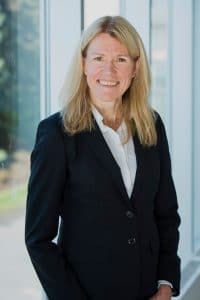Radiology departments consist of a variety of overlapping and intersecting responsibilities, with tremendous interplay between disciplines. This can make managing the professional relationships between radiologists, technologists, booking clerks, nurses, and others a complex challenge.

Dr. Jean Seely is President of the Canadian Society of Breast imaging (CSBI) and Co-Chair of the CAR’s Breast Imaging Working Group. In her decades of experience, having positive interaction between these groups is critical to accomplishing departmental goals and offering better patient care, while strained relationships can drastically impede the aims of a department.
“The ongoing challenge is simply that each different group within a radiology department has different responsibilities or goals and processes for achieving them,” says Dr. Seely. “As radiologists, we know what is required of us to do our jobs but sometimes we might not see how our work fits within the larger network of clinical administration.”
Dr. Seely says that when speaking from different vantage points in a workplace, it is often difficult to understand the fundamentals of each other’s perspectives. These situations are often a matter of properly defining the problem, seeking first to understand it before resolving it. She recalled an experience implementing new workflow software as an example of this disconnect in action.
“When bringing in this new medical information system, what we didn’t initially realize was that the information the radiologist sees is not necessarily the same as what the technologist or booking clerk might see on their end, which led to several communication problems. It wasn’t until we took screenshots and shared our exact viewpoints of the information that we fully understood what the other person was talking about.”
The inverse can also take place, and lead to positive outcomes with efficient execution.
Dr. Seely recounted an issue surrounding pre-surgical radioactive seed procedures. The underlying problem was that patients were consistently delayed getting from the pre-surgical procedure to the surgery appointment. This was difficult for patients, and surgeons were displeased with the slow downs. Despite carrying out the correct pre-surgical procedures, radiologists were being held accountable for the delays.
The issue brought together clinical and administrative staff to better understand each other’s role in the process, which swiftly generated a solution. “Once the manager found out the radioactive seed procedure could be done outside of the surgery day instead of same-day for similar or lower costs, administrative changes were implemented quickly to adjust the staffing needs and the delays were gone,” says Dr. Seely.
Though the outcome in this instance turned out positively, it did not come about on its own or accidentally, says Dr. Seely. Had radiologists, surgeons, and administration remained siloed and not come together to commonly understand each other, the solution for the delays may not have materialized or been implemented as quickly as it did.
“It is paramount that radiologists invest time in building relationships with people administering medical care,” says Dr. Seely. “It is an incredibly effective way of avoiding conflict and resolving problems.”
